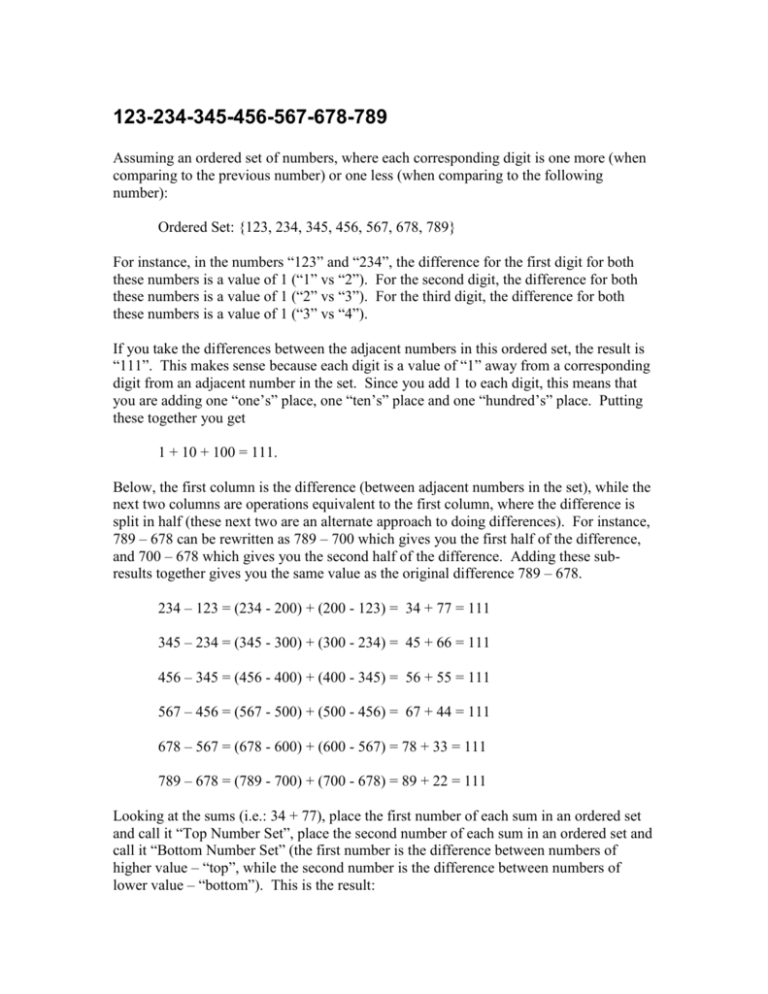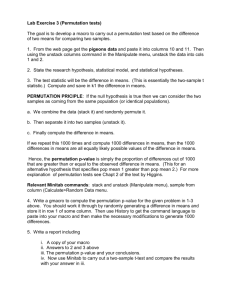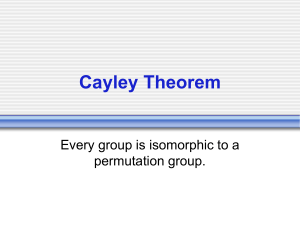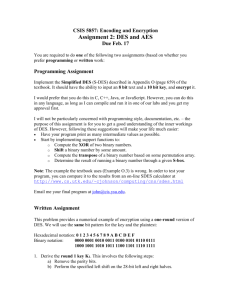123-234-345-456-567-678-789
advertisement

123-234-345-456-567-678-789
Assuming an ordered set of numbers, where each corresponding digit is one more (when
comparing to the previous number) or one less (when comparing to the following
number):
Ordered Set: {123, 234, 345, 456, 567, 678, 789}
For instance, in the numbers “123” and “234”, the difference for the first digit for both
these numbers is a value of 1 (“1” vs “2”). For the second digit, the difference for both
these numbers is a value of 1 (“2” vs “3”). For the third digit, the difference for both
these numbers is a value of 1 (“3” vs “4”).
If you take the differences between the adjacent numbers in this ordered set, the result is
“111”. This makes sense because each digit is a value of “1” away from a corresponding
digit from an adjacent number in the set. Since you add 1 to each digit, this means that
you are adding one “one’s” place, one “ten’s” place and one “hundred’s” place. Putting
these together you get
1 + 10 + 100 = 111.
Below, the first column is the difference (between adjacent numbers in the set), while the
next two columns are operations equivalent to the first column, where the difference is
split in half (these next two are an alternate approach to doing differences). For instance,
789 – 678 can be rewritten as 789 – 700 which gives you the first half of the difference,
and 700 – 678 which gives you the second half of the difference. Adding these subresults together gives you the same value as the original difference 789 – 678.
234 – 123 = (234 - 200) + (200 - 123) = 34 + 77 = 111
345 – 234 = (345 - 300) + (300 - 234) = 45 + 66 = 111
456 – 345 = (456 - 400) + (400 - 345) = 56 + 55 = 111
567 – 456 = (567 - 500) + (500 - 456) = 67 + 44 = 111
678 – 567 = (678 - 600) + (600 - 567) = 78 + 33 = 111
789 – 678 = (789 - 700) + (700 - 678) = 89 + 22 = 111
Looking at the sums (i.e.: 34 + 77), place the first number of each sum in an ordered set
and call it “Top Number Set”, place the second number of each sum in an ordered set and
call it “Bottom Number Set” (the first number is the difference between numbers of
higher value – “top”, while the second number is the difference between numbers of
lower value – “bottom”). This is the result:
Top Number Set: {34, 45, 56, 67, 78, 89}
Bottom Number Set: {77, 66, 55, 44, 33, 22}
Notice that “Top Number Set” is increasing, while “Bottom Number Set” is decreasing.
This is because of the constraint that when corresponding numbers in each set are
summed they must equal the number “111”. Thus, going from 34 to 45 is an increase of
11, and going from 77 to 66 is a decrease of 11. Since this change in value is constant, as
one number goes up and the other number goes down, the sum remains the same.
If you assume that each number represents a clock time (i.e.: “123” is 1:23), then the
numbers “567”, “678” and “789” would be left out since they could not correspond to a
standard clock time.
New “Clock-time” Ordered Set: {1:23, 2:34, 3:45, 4:56}
The properties discussed above for the Ordered Set would still apply to this New “Clocktime” Ordered Set. However, because these numbers are now clock times, differences
will be performed assuming that there are 60 minutes for every hour.
2:34 – 1:23 = (2:34 – 2:00) + (2:00 – 1:23) = 0:34 + 0:37 = 71 minutes
3:45 – 2:34 = (3:45 – 3:00) + (3:00 – 2:34) = 0:45 + 0:26 = 71 minutes
4:56 – 3:45 = (4:56 – 4:00) + (4:00 – 3:45) = 0:56 + 0:15 = 71 minutes
Notice that for above, the differences between adjacent clock times is constant at 71
minutes. Stated another way, this is 60 minutes + 11 minutes, or 1 hour 11 minutes
(which looks a lot like the value “111” for the Ordered Set).
These properties can now be extended to differences of adjacent numbers in permutation
sets. In other words, new sets can be created with numbers similar to the Ordered Set,
where each number is a permutation of a corresponding number in the Ordered Set. For
instance, based on Ordered Set = {123, 234, 345, 456, 567, 678, 789}, you now have
Permutation #1 Ordered Set = {132, 243, 354, 465, 576, 687, 798}. It turns out that the
difference between adjacent numbers in this Permutation #1 Ordered Set is a constant
value of 111, as before. However, for this to work, the pattern that was used to generate
each permutation has to be the same for every number in the permutation set. For
instance, the first number in the Ordered Set is 123. The first number in the Permutation
#1 Ordered Set is 132. The pattern that was used to generate 132 was to keep the first
digit “1” and to swap the next two digits, so “23” becomes “32”, and 132 is generated.
This same pattern is applied to the rest of the numbers generated in the Permutation #1
Ordered Set.
Ordered Set value => Permutation #1 Ordered Set value:
123 => 132
234 => 243
345 => 354
456 => 465
567 => 576
678 => 687
789 => 798
In addition, each number in the Ordered Set has 6 permutations. This allows us to
generate a total of 6 Permutation sets: 1 Ordered Set and 5 Ordered Permutation Sets.
(The underlined numbers are not eligible to be “clock-time” numbers)
Permutation #1: {123, 234, 345, 456, 567, 678, 789} [“Ordered Set”]
Permutation #2: {132, 243, 354, 465, 576, 687, 798}
Permutation #3: {213, 324, 435, 546, 657, 768, 879}
Permutation #4: {231, 342, 453, 564, 675, 786, 897}
Permutation #5: {312, 423, 534, 645, 756, 867, 978}
Permutation #6: {321, 432, 543, 654, 765, 876, 987}
Because the patterns used to generate each Permutation Set are the same for each of these
sets, the difference between a number in one Permutation set and a corresponding number
in another Permutation set will be the same across all numbers in the sets. For instance,
between Permutation #6 and Permutation #1, the difference between the first number in
each set is 321 – 123 = 198. Now we can use this result and add it to each number in
Permutation #1 to generate a matching corresponding number in Permutation #6. 234
(the second number in Permutation #1) + 198 = 432 (the second number in Permutation
#6. 345 (the third number in Permutation #1) + 198 = 543 (the third number in
Permutation #6), and so on.
In this way, we can determine the differences between Permutation Sets.
Permutations Set Difference Combinations (pairs in brackets are repeats):
1-2, 1-3, 1-4, 1-5, 1-6
[2-1], 2-3, 2-4, 2-5, 2-6
[3-1], [3-2], 3-4, 3-5, 3-6
[4-1], [4-2], [4-3], 4-5, 4-6
[5-1], [5-2], [5-3], [5-4], 5-6
[6-1], [6-2], [6-3], [6-4], [6-5]
Permutation Set Differences, using the first number of each set to do the differences,
always taking the larger minus the smaller number:
1-2: 132 – 123 = 9
1-3: 213 – 123 = 90
1-4: 231 – 123 = 108
1-5: 312 – 123 = 189
1-6: 321 – 123 = 198
2-3: 213 – 132 = 81
2-4: 231 – 132 = 99
2-5: 312 – 132 = 180
2-6: 321 – 132 = 189
3-4: 231 – 213 = 18
3-5: 312 – 213 = 99
3-6: 321 – 213 = 108
4-5: 312 – 231 = 81
4-6: 321 – 231 = 90
5-6: 321 – 312 = 9
Ordering these differences ascending:
1-2 / 5-6: 9
3-4: 18
2-3 / 4-5: 81
1-3 / 4-6: 90
2-4 / 3-5: 99
1-4 / 3-6: 108
2-5: 180
1-5 / 2-6: 189
1-6: 198
Putting the differences above into a matrix:
9,
90, 108, 189, 198
9,
81, 99, 180, 189
90, 81, 18, 99, 108
108, 99, 18, 81, 90
189, 180, 99, 81, 9
198, 189, 108, 90, 9
There appears to be a relationship between the differences of permutation sets that are
shown in this pseudo-symmetric matrix, but this relationship is difficult to ascertain.
However, one obvious relationship is that each of these numbers is divisible by the
number 9. If you divide each of these numbers by 9, you get a new matrix.
1, 10, 12, 21, 22
1, 9, 11, 20, 21
10, 9, 2, 11, 12
12, 11, 2, 9, 10
21, 20, 11, 9, 1
22, 21, 12, 10, 1







